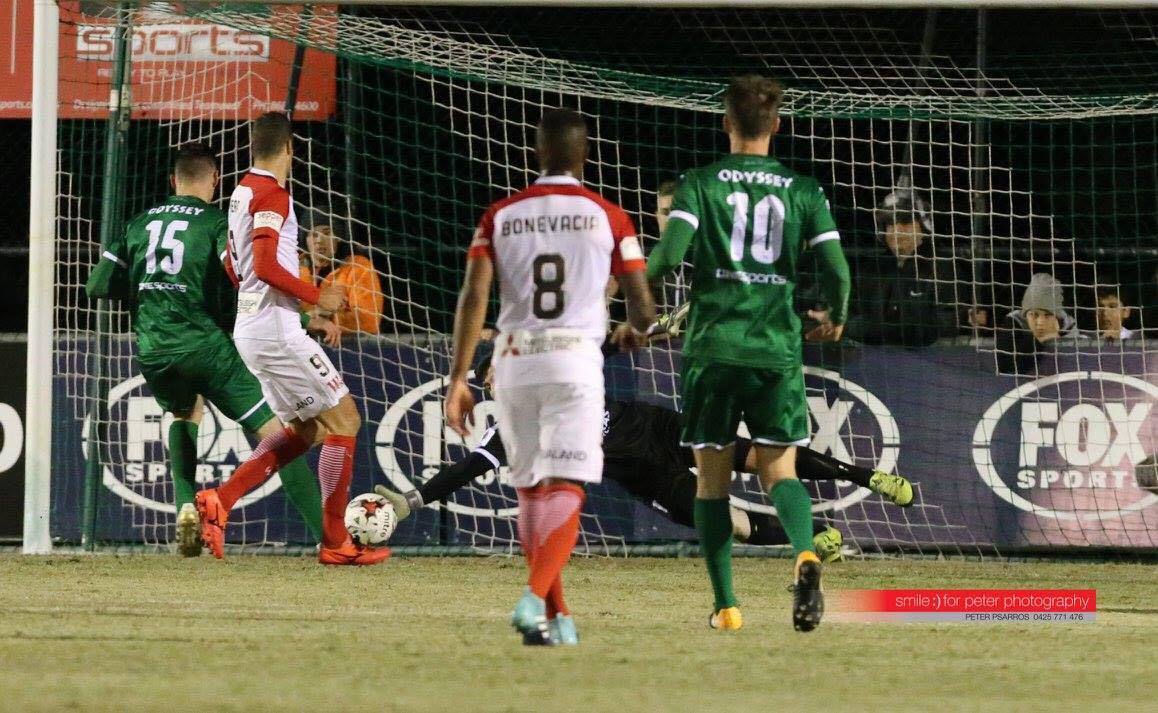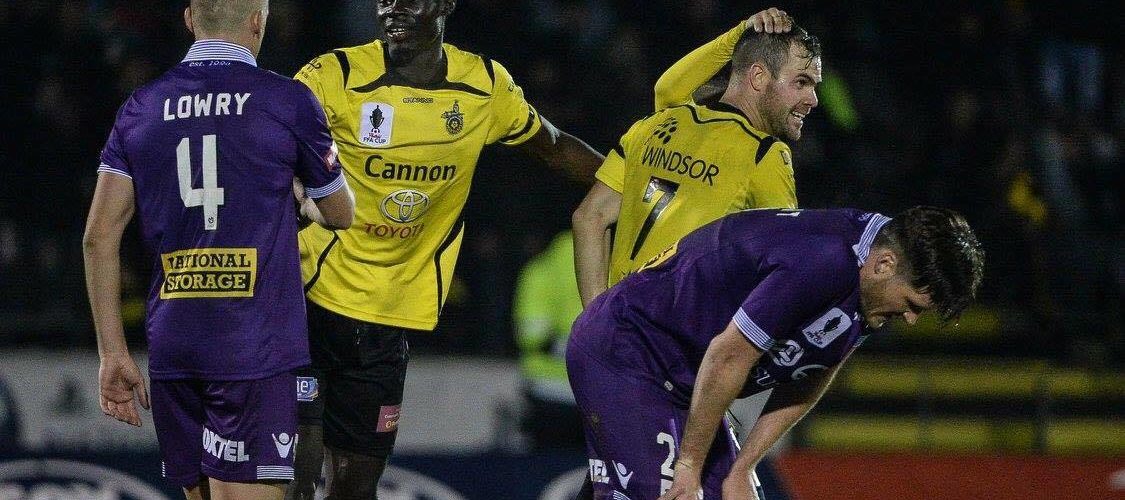Image: Mark Avellino
What do Charlie Austin, Scott Chipperfield, Didier Drogba, Dado Prso, Luca Toni, Jamie Vardy and Ian Wright all have in common? They were late bloomers who only became professionals after turning 21 and often juggled full-time work with their part-time round ball careers.
The birth of the A-League 12 years ago gave thousands of Australian footballers a professional league to aspire to. Yet fast forward to the present and the league appears to be a closed shop for the many semi-professional footballers across the country still dreaming of forging out a professional career in the game.
Despite Heidelberg United and Blacktown City’s recent FFA Cup upsets, A-League coaches appear reluctant once more to give those outside the professional setup an opportunity to excel at the highest level of football in the country.
In late July last year, we ran a report on the lack of player promotion from the NPL into the A-League. From the 51 players signed by A-League clubs at that point, only one came from the NPL via the Centre of Excellence (COE) which shuts up shop in the coming months.
This A-League pre-season has seen 71 players join the 10 teams in the competition, with the struggling Central Coast Mariners the biggest recruiters with 11 new additions.
These are the findings formulated from those 71 transfers:
- 32 (45%) have been inter-league moves (players moving between A-League clubs)
- 35 (49%) have been overseas movers (players moving to the A-League from overseas)
- 2 (3%) have been signings made from the Centre of Excellence in Canberra
- 2 (3%) have been signings made from the NPL, although both those players in question – Lewis Italiano and Mitchell Oxborrow – were playing in the A-League as recently as last season and only spent the off-season plying their trade in second tier.
- 24 (34%) were players from overseas although Australian-born defenders Daniel Georgievski and Ersan Gulum are included in this figure as they have represented Macedonia and Turkey at an international level. The figure rises to 37% when factoring out Kiwi players Kosta Barbarouses and Glen Moss.
These statistics show that there is a mistrust by A-League coaches, many of whom are seldom seen at NPL matches across the country, in players outside the professional sphere who have to juggle day-to-day jobs with their football commitments.
This lack of trust in such players is at odds with the salary cap allocation which allows A-League clubs space within the cap to recruit players specifically from the NPL. Such an economic division exists that for many, giving up the safety of a career outside of football combined with NPL wages is not worth the risk of a tenuous A-League opportunity, as in the well-documented case of South Melbourne star striker Milos Lujic.
History shows a mixed level of success for players making this step-up, with the transition period being difficult for many who ultimately returned to their part-time status.
However, the success stories outweigh the failures and the two best-known examples are Melbourne pair Sasa Ognenovski and Ivan Franjic.
The former had previously featured in the NSL as well as spending a season playing professionally in Greece but was at the crossroads of his career in 2006.
Having turned 27, Ognenovski was working as a carpenter and was contemplating giving the game up to play local footy, with his mates until being offered a professional lifeline by the Brisbane Roar in 2006.
From there onwards, his career blossomed as the formidable defender won the Asian Champions League and Asian Player of the Year awards in 2010 after his continental success with Korea’s Seongnam and went on to earn 22 Socceroos caps as he helped Holger Osieck’s side reach the 2011 Asian Cup Final as well as qualify for the 2014 World Cup.
Similarly, Franjic was working as an apprentice carpenter and playing in the Victorian Premier League when a short-term injury replacement contract was afforded to him by the Brisbane Roar 10 days shy of his 22nd birthday on this day exactly eight years ago.
Like Ognenovski, Franjic progressed and won three A-League Championships at the Roar before becoming Ange Postecoglou’s starting right-back at the 2014 World Cup and victorious Asian Cup triumph on home soil in January 2015.
He assisted Tim Cahill’s goal in the 3-1 defeat to Chile in Brazil as well as earning a move to Russian Premier League side Torpedo Moscow in the process, before returning home and helping Melbourne City lift their first piece of silverware last term.
Former Roar captain Matt Smith and ex-Melbourne Victory defender Rodrigo Vargas won multiple A-League championships following their accession into the A-League at the age of 27, in addition to earning Socceroos call-ups.
Likewise, while initially rejected by A-League youth teams, Craig Goodwin and Matt Leckie used the state leagues as platforms for successful A-League careers, with both now Socceroos and starting players in two of Europe’s top leagues.
Although much of the football media in this country champions the FFA Cup and its breakout stars, they are complicit in the closed shop player movement, rarely questioning the signings of certain players who move around from club to club without making much of an impression.

Part of this stems from the lack of appetite to scout and scrutinise the NPL, with most A-League clubs limiting themselves to only watching NPL games featuring their youth teams.
There is no such independent evidence which ascertains that trusting the A-League youth teams in the NPL as credible player pathway system actually works, with the majority of members in such squads released to NPL clubs upon completing a two-three year period in the system, frustrated by the lack of opportunities to break into the professional first team.
NPL clubs across the country are classified as being in the pathway when their role in developing talent is rarely scrutinised itself. This leaves us with a disjointed and unstructured player pathway system, which offers so few opportunities at a professional level.
One can only wonder what the likes of Chris Oldfield, Ryan Scott, Jeremy Walker, Josh Wilkins, Jack Webster, Andreas Govas, Jay Davies, Dusan Bosnjak, Nick Epifano, Nick Krousoratis, Sean Ellis, Elvis Kamsoba, Damian Iaconis, Kenny Athiu, Milos Lujic and Davey van’t Schip amongst others could do if afforded a sustained opportunity at a higher level.

